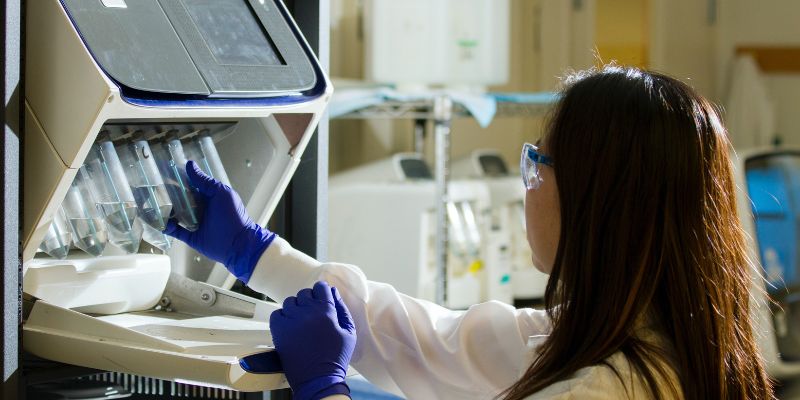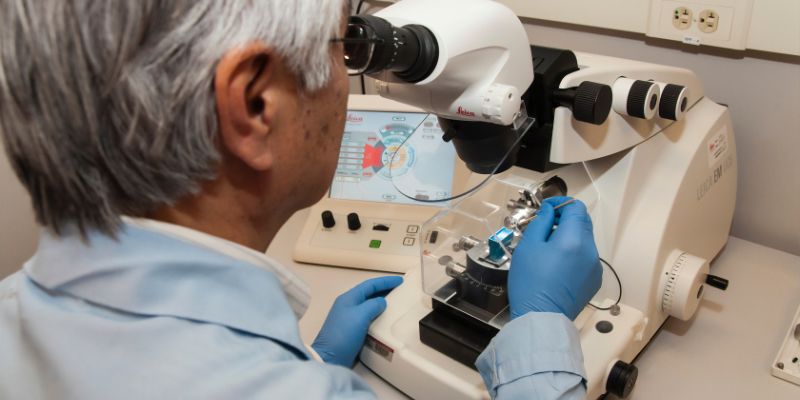Unveiling the Genetic Link: Is Parkinson's Disease Hereditary?
Dec 30, 2023 By Nancy Miller
Disorders that may be traced back to either parent are categorized as hereditary disorders. Although certain genetic disorders tend to run in families, this is not always the case. Some genetic illnesses result from chance mutations that have nothing to do with a person's parents.
Symptoms of Parkinson's disease include tremors, delayed movement, balance difficulty, and stiffness, and it most often affects the elderly. Only around 10%-15% of those with Parkinson's have a family history of the disease.
Recent studies suggest that a number of different hereditary and environmental variables work together to cause Parkinson's disease. This article provides a more in-depth look at these aspects, illuminating possible causes and examining potential preventative measures.
Can a person get Parkinson's through their parents?
Most instances of Parkinson's do not follow any clear familial patterns, therefore the risk of inheriting the disease is minimal. Early-onset Parkinson's disease, however, raises the issue of inheritance to a greater degree.
Even while Parkinson's isn't often inherited, a family history of the condition might increase your chance of acquiring it. This suggests that a person's vulnerability to developing Parkinson's may be somewhat increased if they had a parent or sibling with the disease.
Origins of Parkinson's Disease and Risk Factors
Although experts have not yet pinpointed a single cause for Parkinson's disease, they have pinpointed a number of risk factors that increase the illness's prevalence. Risk factors include being male, being older than 60, having a history of brain injury, being exposed to herbicides and pesticides for an extended period of time, and being genetically predisposed to develop Parkinson's disease. Understanding the interaction of these elements in the genesis of Parkinson's gives a more complete picture of this puzzling disorder and offers vital ideas for future investigation and treatment.
Various Causes of the Disease
There are two primary types of Parkinson's disease: sporadic and familial, both of which result from a complex interaction of genetic and environmental variables. The majority of occurrences, known as sporadic cases, occur in people who have no known relatives who have the illness.
Gene variations or mutations in LRRK2, PARK7, PINK1, PRKN, or SNCA are responsible for around 15% of familial Parkinson's cases. Curiously, these genes may also play a role in certain sporadic instances, further muddying the distinction between hereditary and random occurrences.
Although genes like GBA and UCHL1 don't seem to have a direct role in Parkinson's development, they do seem to alter risk in some families. Moreover, vulnerability to Parkinson's may also be influenced by genes that have yet to be discovered.
It is still unclear how exactly genetic variations cause Parkinson's disease or affect risk. Mutations in some genes may cause toxic proteins to build up in the body and affect nerve cells. Some interfere with mitochondrial activity, which results in the production of free radicals that may damage cells. In addition, Lewy bodies, protein deposits in dopamine-producing neurons, are found in the vast majority of cases, albeit their involvement in cell death is still debated.
Role of Inheritance

Most people who get Parkinson's disease have no known relatives who also suffer from the condition. These isolated cases might be devoid of inheritance or exhibit a mysterious pattern of inheritance.
The affected gene determines the pattern of inheritance in family instances. It just takes one mutated copy of the LRRK2 or SNCA gene to be present in every cell for Parkinson's disease to be inherited in an autosomal dominant fashion. Affected children often inherit the disorder from one parent.
However, Parkinson's disease is inherited in an autosomal recessive pattern if mutations are found in the PARK7, PINK1, or PRKN genes. Here, the problem is caused by the presence of a variation in both of the gene's copies in each cell. In autosomal recessive disorders, both parents have a copy of the mutated gene but often show no symptoms of the disease.
However, the specific inheritance pattern is typically unknown when genetic variations affect the risk of Parkinson's disease.
Possible Options for Diagnosis
As there are presently no conclusive blood or laboratory tests available, the diagnosis of non-genetic instances of Parkinson's disease rests on clinical examination. In order to diagnose neurological disorders, clinicians usually collect patient histories and do extensive physical examinations. Improvement in symptoms after starting treatment is suggestive of Parkinson's disease.
It's important to keep in mind that other conditions might present with symptoms similar to Parkinson's disease (also called parkinsonism). Possible misdiagnosis of Parkinson's include multiple system atrophy and dementia with Lewy bodies. However, professionals can better establish the underlying reason by particular medical testing and evaluating the response to pharmacological therapies. Because different illnesses might appear similarly yet need different treatments, getting a correct diagnosis as soon as possible is crucial.
How to Support Affected People

The slow but steady nature of Parkinson's disease means that it may ultimately interfere with regular activities. Problems may arise in various aspects of daily life, including job, home life, and social interactions. Adjusting to these changes might seem overwhelming, but support groups can provide much-needed relief. Individuals coping with Parkinson's disease and their committed family and caregivers may turn to these organizations as a safe haven for information, guidance, and access to vital services. Here is a list of organizations that are working hard to help people with Parkinson's find their way through the maze of support groups and other community services.
Conclusion
Although solving the issue of preventing Parkinson's disease is far from solved, there are measures that may be taken to lower an individual's risk. Participation in regular physical activity, particularly aerobic activity, has been associated with a reduced chance of acquiring Parkinson's disease. Fruits and vegetables, which are high in antioxidants, should be part of a healthy, well-balanced diet. Pesticides and herbicides have been linked to a higher risk, therefore it's best to stay away from them. Keeping one's mind and social life busy by taking on difficult mental challenges and keeping up with friends and family may also help lower the risk. There is no certainty that doing these actions would prevent Parkinson's disease, but doing so will improve your health and happiness overall.







